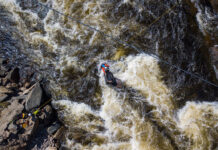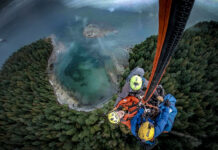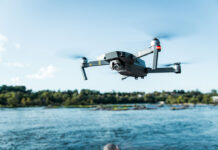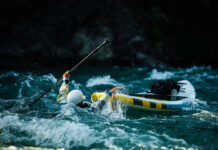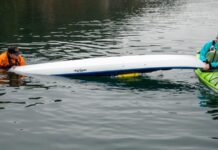A group of kayakers in Manhattan had a collision with a ferry on August 30.
Nine clients of the Manhattan Kayak Company and one guide were paddling on the Hudson River when the collision occurred, leaving five of them injured. The New York Times reports that the owner of the Manhattan Kayak Company, Eric Stiller, says the guide saw the ferry and waved his paddle at the captain to try and alert him to their presence. The guide is reported to have suffered the most serious injuries.
When sharing waterways with larger vessels, being highly visible can reduce the chance of collision. It also makes it easier for rescuers to locate you, especially in low-visibility conditions kayakers know well, like foggy mornings or glaring sun. Follow these five expert tips for staying visible on the water and reduce your chances of dangerous encounters with other boats and vessels.
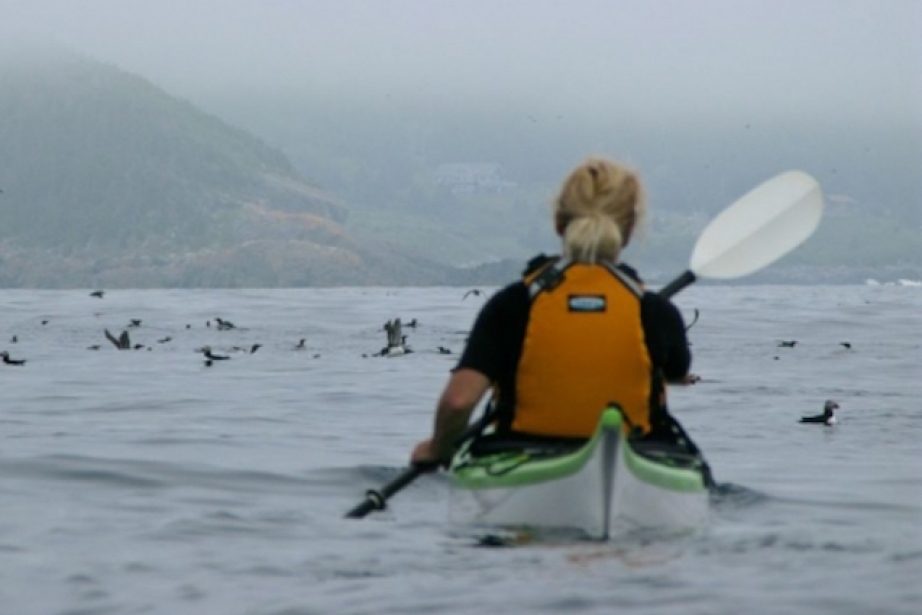
1Determine the best colors for visibility on the water
One of the most frequently asked questions sea kayak professionals hear is what color is best to wear for visibility on the water. The answer is that the conditions you are kayaking in will determine the best colors to wear. For example, on bright and sunny days, red is the best bet, while overcast conditions call for bright yellow and red-yellow.
2 Learn how to build a lit compass
If you are paddling at night or early in the morning, having a lit compass is a great way to maintain your ability to navigate while enhancing visibility. Knowing where you are going at all times will help you avoid ending up in dangerous waters or in the path of large boats. There are not a lot of options on the market for lit compasses, but Leon Sommé of Body Boat Blade International shows you how to construct your own DIY deck-mounted compass here.
3Understand the basics of marine VHF radio use
If you are kayaking on open water, you should carry and know how to use a marine VHF radio. They are essential for routine and emergency communication on the water, including contacting the Coast Guard or other vessels. Learn the basics of communication with your marine VHF radio here.
4 Boost your VHF range
VHF marine radios work on a line of sight principle with the range of the radio depending on the unit’s wattage. The radio waves are deflected and obstructed by landforms, which means that going offshore or hiking to an elevated point can help boost your range. Learn more tips to boost your VHF range here.
5Master kayaking in foggy weather
Paddling when the fog rolls in can make navigation difficult even for an extremely experienced sea kayaker. Combined with rough water and wind, fog has the ability to throw you off course and compromise your safety. One technique to keep you on course is to aim off—intentionally following your compass bearing towards an obvious landmass adjacent to your destination. Find four more tips for foggy weather paddling here.



